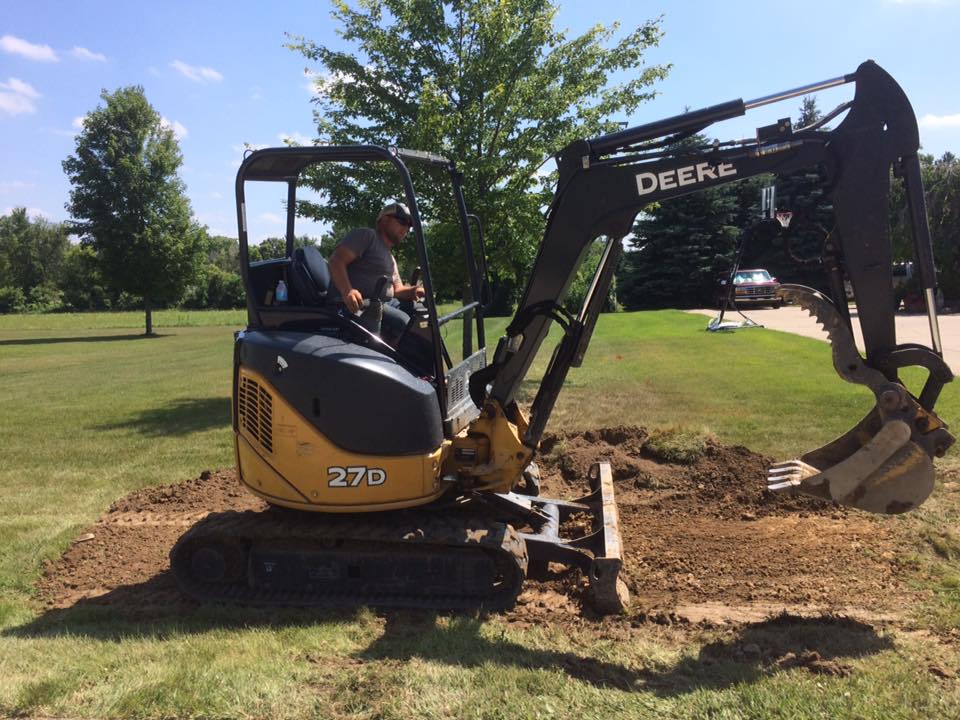
[08/27/2019] Providing the opportunity for your home to be connected to the world via
Before we begin construction in an area, engineers carefully assess the environment and determine whether aerial or underground construction makes the most sense. Building underground is often the most efficient way to expand our network and connect it to your home. In some areas, generally more rural, our network is aerial (attached to utility poles), but this requires us to obtain permits and rent the space on the poles, so it can become a lengthy process.
When we do place our services underground, we always do so in the right-of-way. What is the right-of-way? When roads and streets are constructed by a city, township, or county, a buffer area on either side of the paved area is created. This area, known as the road right-of-way, is measured from the center line of the road and varies based on the type of road. A common width is 33 feet from the center line of the road. In an area with sidewalks, the right-of-way includes and often extends beyond the sidewalk. As a telephone company licensed by the State of Michigan, we are authorized to place communications cables in the public right-of-way. This right-of-way is shared by other utilities and is used to deliver services like gas, electricity, water, sewer and cable TV. DayStarr coordinates access to this public right-of-way with the governing municipality and is permitted to access this area as needed to construct and maintain current and future communications infrastructure.
Public Act 174 of 2013 requires that ANYONE who disturbs the ground with power tools call Miss Dig ( 811 ) prior to digging. It is not legal to begin digging until all providers in the area have indicated their flags have been placed and it is safe to dig. This applies anywhere but is particularly important in the right-of-way. DayStarr always works closely with the local utility owners and MissDig to ensure that we dig safely. Homeowners must not remove flags (even for lawn mowing) without first speaking to one of our crew to ensure we are done in that area.
It is extremely important to note that MissDig only locates public utilities. While technically homeowners are not allowed to place sprinklers, dog fences, or private electric lines in the right-of-way, we know it happens. If MissDig doesn’t mark it, we don’t know it’s there! Please speak to our crew and alert them to any such buried services so that we can avoid them. If we do damage these lines, our crew is trained to repair them for you, however we cannot reimburse you for third-party contractors to do the repairs without prior approval. The best solution is to talk with our crew so that we completely avoid your buried services!
DayStarr most often uses a process known as horizontal directional drilling (HDD) or directional boring. Most of the time we just refer to it as boring (even though it’s really quite exciting!) In the past utilities had to excavate a trench along the entire path that a new utility was to be placed. Using boring, we can enter the ground and then drill horizontally many feet before popping up out of the ground at our next access point.
PA 174 requires that when digging within 48” of a buried utility the accuracy of the flag or paint mark be verified visually. This verification is accomplished through “spotting“ the buried utility with a small hole using soft excavation techniques (hand or water digging). When the mark is inaccurate, a bigger hole or opening must be created to find the buried utility. Our crew goes through the area and spots utilities prior to beginning the directional drilling process. A spot hole is then covered with a cone or plywood until we have completed the process of boring in that area.
Wherever we dig we make an effort to restore the ground to an equal or better condition than what we found. The construction in an immediate area can often take several weeks. After construction in an area is complete, our restoration crew*** will restore the right-of-way. When possible, we try to accommodate special requests like specific brands of seed or even throwing topsoil and seed out in small nearby areas of your yard that could use some help. Weather can impact how soon we are able to get back and perform restorations. If construction is occurring in the winter or spring, we may wait until an appropriate season so that the new grass seed can take root.
Know that we dig with purpose and we strive to restore the right-of-way in front of your yard, so in the future, it’s like we were never there. Unfortunately, sometimes the ground settles, or we miss a location. If you ever notice an area that needs some extra attention, we encourage you to contact our office and we can ensure that the right-of-way is looking its best!
Our goal is that when we are completed, the only difference you notice is the availability of the fastest internet in the county!